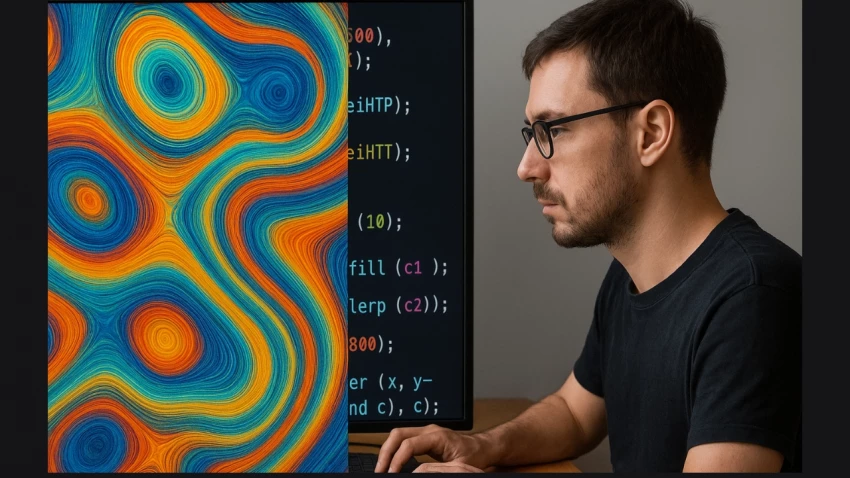

When you think of art, what comes to mind first? For many, it’s a paintbrush, a canvas, or maybe a block of marble waiting to be sculpted. But in the 21st century, another tool is reshaping the boundaries of creativity: code. Artists across disciplines are no longer just collaborating with other artists; they’re collaborating with algorithms, neural networks, and machine learning models.
This isn’t about replacing creativity. It’s about extending it. The fusion of art and code is giving rise to entirely new forms of expression, where human intuition meets computational power.
One reason is scale. A painter can create a series of works over months, but with generative algorithms, an artist can create thousands of variations in seconds. This doesn’t mean the work is less artistic. Instead, it allows artists to explore more possibilities, refine their vision, and challenge our assumptions about originality.
Another reason is accessibility. Open-source tools like Processing, p5.js, and Runway ML have lowered the barrier to entry. You don’t need to be a computer scientist to create art with code; you just need curiosity and the willingness to experiment.
But perhaps the most important reason is collaboration itself. Artists aren’t giving orders to machines; they’re working with them. The code suggests, surprises, and evolves, pushing the artist into new territories they might never have reached alone.
Generative art has exploded in recent years. Take Refik Anadol, a media artist who transforms massive datasets into immersive, dreamlike environments. His installations use machine learning to process visual archives, like millions of images of nature or cityscapes, and turn them into fluid, ever-changing digital paintings.
Meanwhile, artists like Mario Klingemann explore the aesthetic of neural networks themselves. His portraits and abstract works often reveal the strange, in-between spaces of AI creativity, half human, half machine.
And then there’s the world of interactive art. With platforms like p5.js, artists can build digital works that respond to touch, sound, or even biometric data. The audience isn’t just a viewer anymore; they become a participant in the creative process.

This is the question at the heart of art and code collaborations. Who is the creator, the artist who writes the algorithm, or the machine that generates the output? Many argue it’s not an either/or situation. The authorship is shared.
Think of it like jazz improvisation. The artist sets the structure, but the machine riffs within it. Each run of the code may produce a unique piece of art, making the relationship more about co-creation than control.
The NFT boom highlighted this issue, too. Generative collections like Art Blocks showed how code-driven art could be both unique and scalable, raising questions about ownership and value in a digital world.
In many ways, yes. Just as oil paints once revolutionized how artists worked, code is becoming another tool in the creative toolkit. But unlike traditional tools, it’s dynamic. A brushstroke stays fixed on a canvas. An algorithm can evolve, adapt, and react in real-time.
This shift has led some to argue that we’re entering a new artistic era, one where creativity is not just human but hybrid. The artistry lies in crafting the rules, the structures, and the frameworks for code to play within.
Several trends are shaping the future of art and code:
The marriage of art and code isn’t about replacing human creativity. It’s about expanding its canvas. Just as artists once embraced photography, video, and digital tools, they’re now embracing algorithms and AI. The result is not a loss of authenticity but a redefinition of it.
We’re entering an age where creativity isn’t just about what we can make, but what we can make together with code. And maybe that’s the most exciting part: the sense that art is no longer bound by human limits, but instead, amplified by new forms of collaboration.
Be the first to post comment!